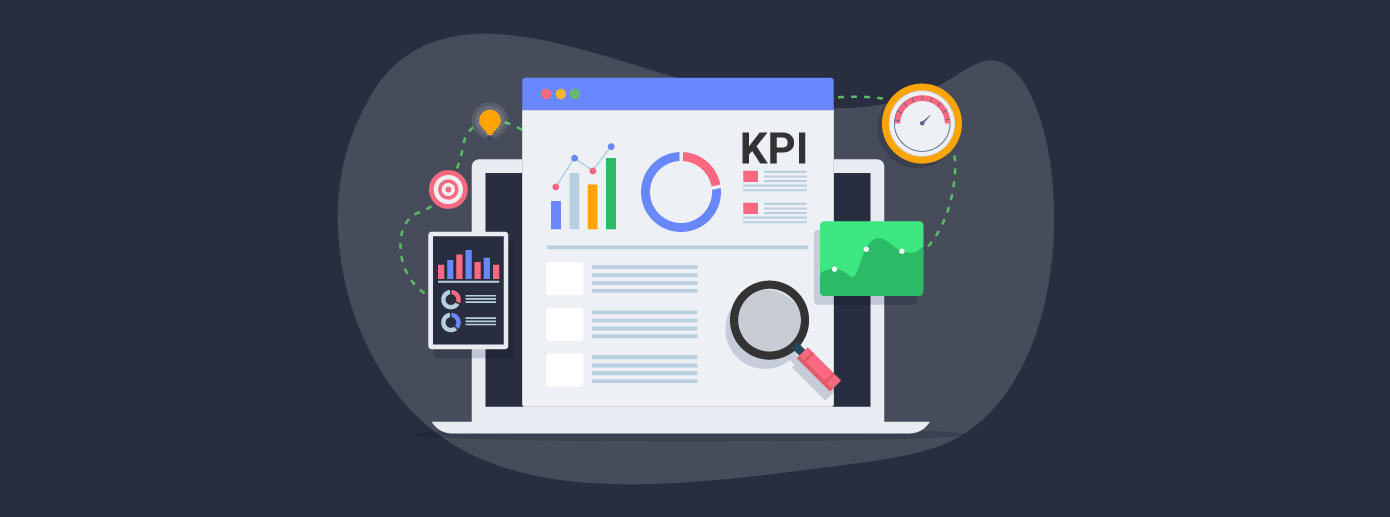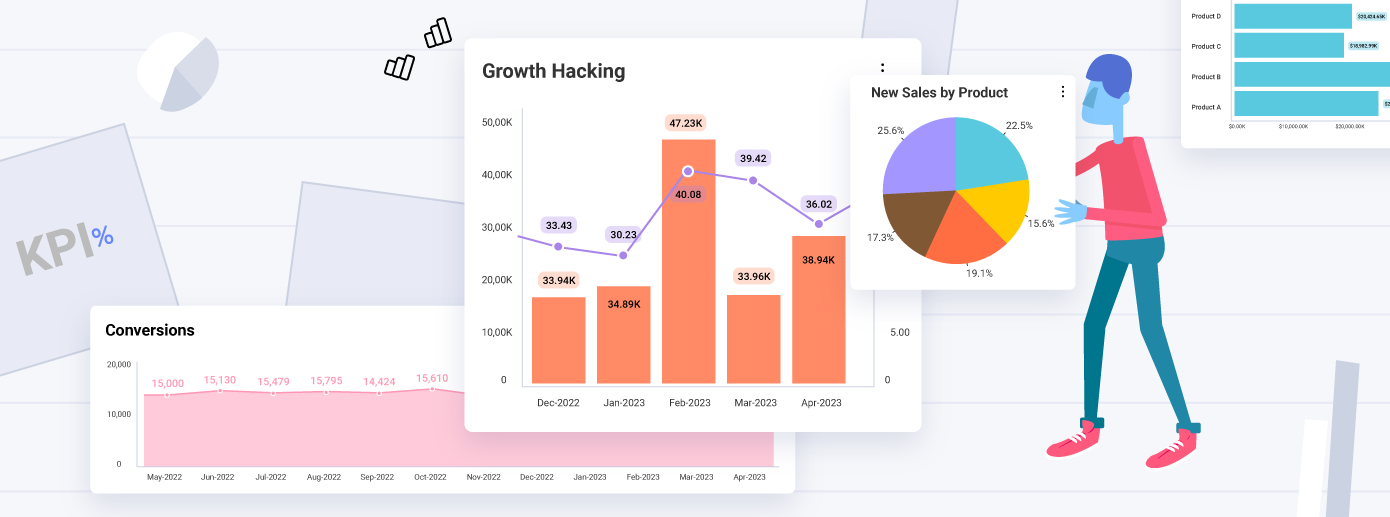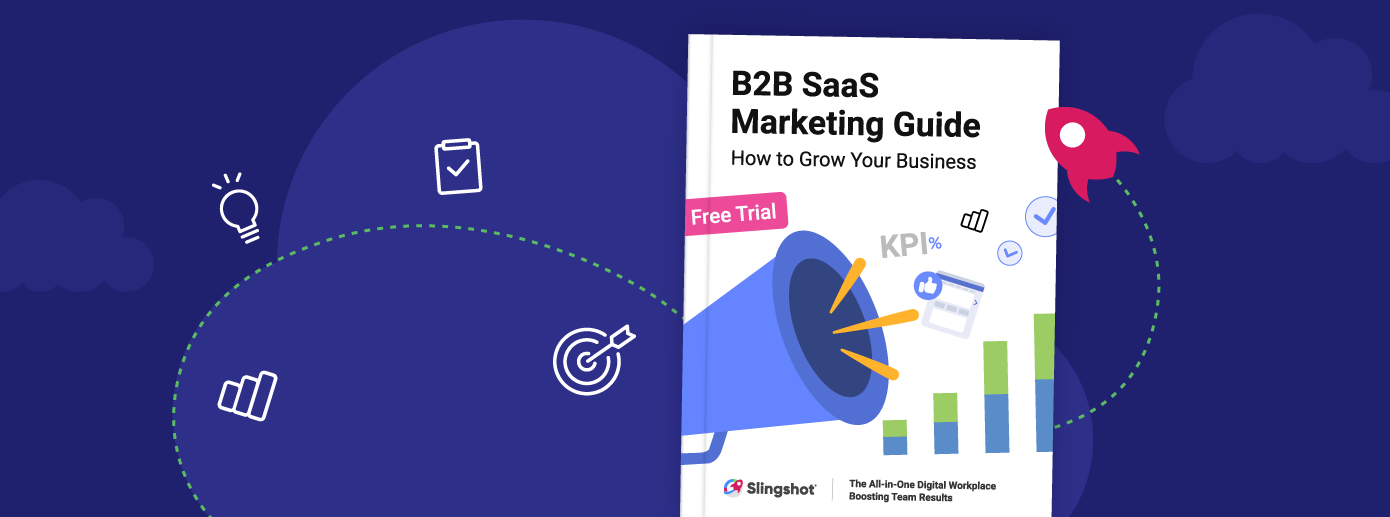
Top 10 SaaS KPIs You Should Track in Your Business
Measure your success, identify areas for improvement, and allow data-driven decision-making by tracking these SaaS KPIs:
Executive Summary:
Measure your success, identify areas for improvement, and allow data-driven decision-making by tracking these SaaS KPIs:
Tracking the right key performance indicators (KPIs) is fundamental to understanding the performance and growth of your SaaS business.
But with so many KPIs to track, it is difficult to determine which ones you should prioritize.
This article will cover the top SaaS KPIs that every business should track to uncover insights about customers, revenue, and overall performance.
Top 10 SaaS KPIs
Measure your success, identify areas for improvement, and allow data-driven decision-making by tracking these SaaS KPIs:
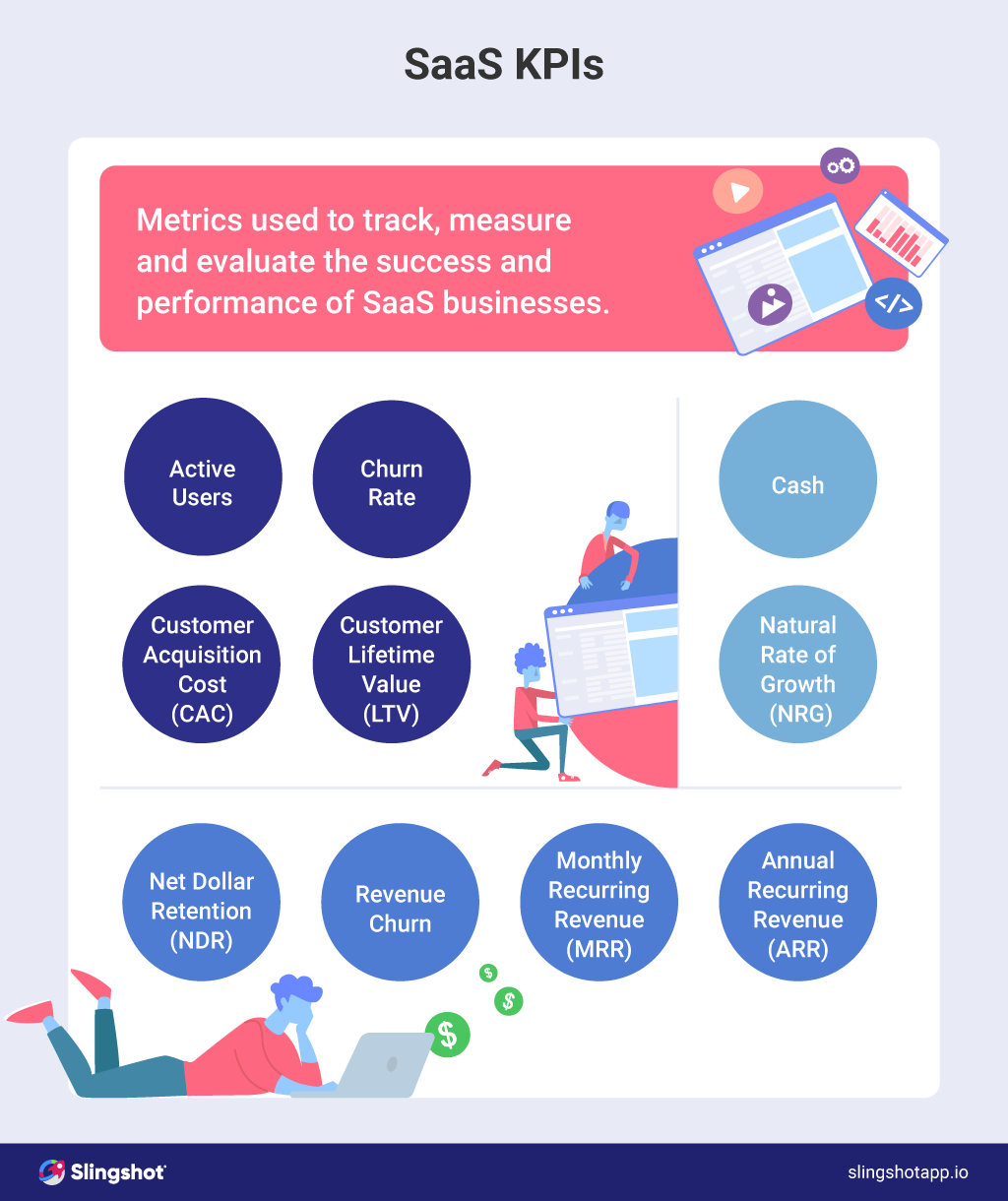
- Active users: This SaaS KPI measures the number of unique users engaged with your product or service over time. The insights gained can help you understand the reach of your product and identify opportunities for user engagement.
- Monthly recurring revenue (MRR): Showcases your business’s total monthly revenue. MRR is an important KPI, especially for SaaS businesses that rely on subscription-based models.
- Annual recurring revenue (ARR): Similar to MRR, this SaaS KPI measures your business’s total revenue yearly. When you know that information, you can better understand the long-term growth potential of your business.
- Customer acquisition cost (CAC): This KPI measures the amount of money your business spends on acquiring new customers, which helps you understand the efficiency of your marketing and sales efforts.
- Customer lifetime value (LTV): This helps you understand the long-term profitability of your business by measuring the total amount of revenue you can expect to generate from a single customer over their lifetime.
- Natural rate of growth (NRG): This metric will measure your business’s growth rate without any external factors, such as marketing or advertising, to understand your organic growth potential.
- Churn rate: The goal of every business is to retain customers, so tracking the churn rate is crucial. Churn rate is a KPI that measures the percentage of customers who cancel their subscriptions or stop using your product or service over a given period.
- Revenue churn: When measuring the churn rate, also measure your revenue churn rate. This KPI measures the revenue lost due to churn and can help you understand the financial impact of customer churn for your SaaS business.
- Net dollar retention (NDR): Understand your customers’ overall health and growth by tracking NDR, a SaaS KPI that measures the revenue retained from existing customers minus any lost revenue due to churn.
- Cash: This is the amount of cash your business has at any given time. It’s an important KPI for all SaaS businesses, regardless of size, as it helps manage finances and plan.
What Are SaaS KPIs & Why Tracking the Right KPIs Is Important for Your SaaS Business?
SaaS KPIs, or Software as a Service Key Performance Indicators, are metrics used to track, measure and evaluate the success and performance of SaaS businesses. SaaS KPIs are crucial for monitoring the health of a SaaS company and for identifying where and how businesses can improve and optimize their overall processes for maximum efficiency and, ultimately, profitability.
Now that you know the top KPIs for every SaaS business, let’s dive into why it is so essential to track them!
Tracking the right SaaS KPIs gives you clear indications of whether you’re meeting your business goals and the overall health of your company. In cases where you may be falling short, having insights into these metrics’ helps you identify where you can make changes to improve and where you may need to focus more attention. A data-driven decision-making process eliminates the guesswork about why you are not meeting your goals and enables better, faster action from your data.
How to Measure SaaS KPIs?
Measuring SaaS KPIs involves collecting and analyzing data. This can be uncomfortable for some business professionals who are uncomfortable with data or can be time-consuming for those manually pulling all their data together.
Thanks to analytics software, both of these are a thing of the past. Analytics software is designed for the business user and allows you to combine data from all your sources into a single view so that you can track your SaaS KPIs in real time. Ideally, you want to use an analytics solution that was designed with SaaS businesses in mind and can offer you all the tools for collecting, analyzing, and presenting easy-to-read and understand SaaS dashboards for effective decision-making.
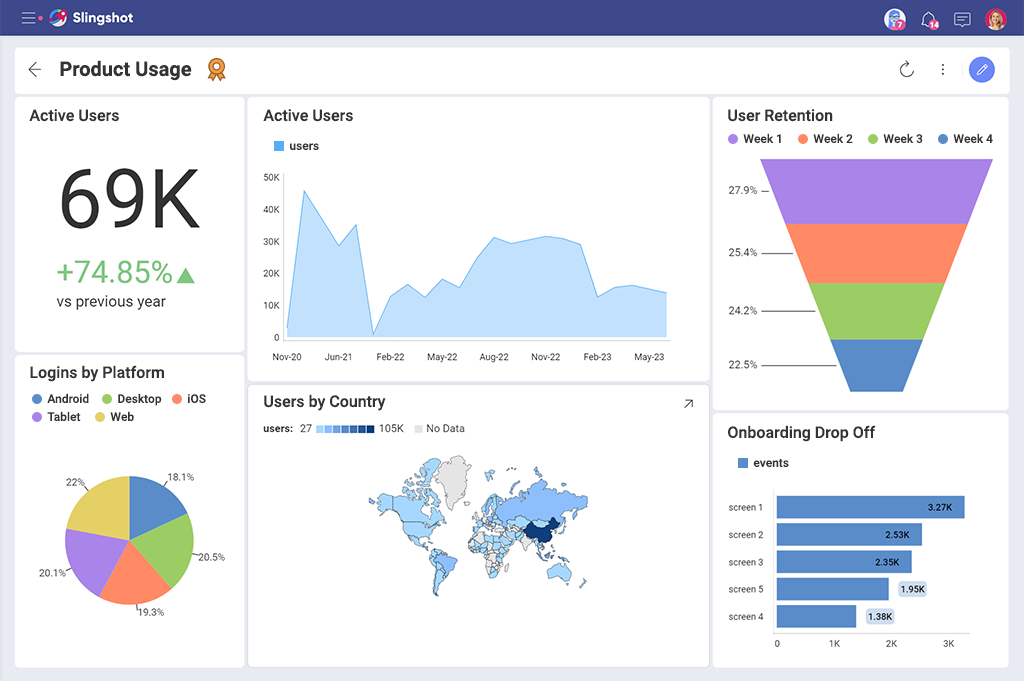
Why Slingshot Is the Right Tool for Your Business?
Slingshot is a productivity tool that simultaneously aggregates data analytics, project, task, and content management, chat, and goals-based strategy benchmarking – in one intuitive app, and can be the right tool for SaaS businesses to track their KPIs for several reasons:
- Real-time data visualization: Slingshot provides real-time data visualization, so you can always stay on top of what’s happening. This is crucial for SaaS businesses as when you’re viewing data in context and have the opportunity to monitor your SaaS KPIs and metrics in real time, you can make more informed business decisions.
- Powerful data analytics and reporting features: Slingshot gives you powerful analytics functionalities such as statistical functions, machine learning, data blending, global filtering, dashboard linking, calculated fields, and more.
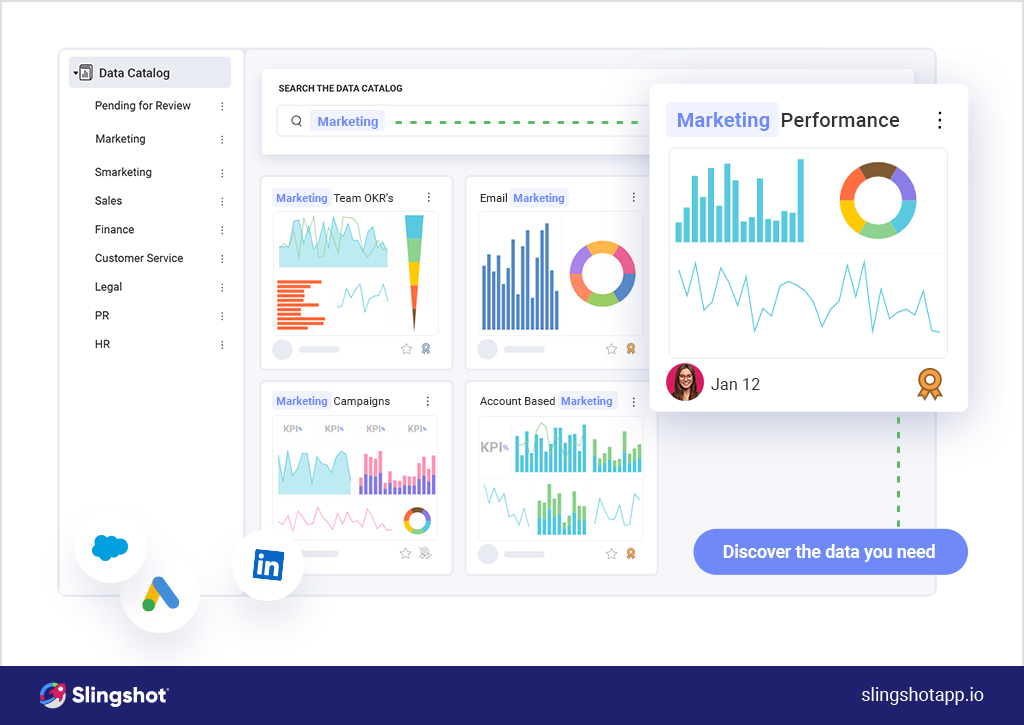
- User-friendly interface: Slingshot simplifies the process of working with data and creating insightful dashboards for users of all levels. With its user-friendly interface, Slingshot allows even non-technical users to easily select data fields from the tables within the data source and simply drag and drop them into separate sections and instantly build beautiful data visualizations.
- Integration with multiple data sources: Slingshot seamlessly integrates with your current operational systems, SaaS systems, databases, spreadsheets, cloud services, and APIs. It is also fully integrated with Azure Machine Learning Studio, so you can choose your data source, build a comprehensive visualization, and connect to a trained machine learning model. Slingshot also supports Google BigQuery, adding significant speed in processing big data with advanced analytics, allowing for usage of huge datasets in seconds.
- Collaboration and sharing capabilities: In Slingshot, all your KPIs, metrics, and dashboards are kept in the same place where collaboration happens. Slingshot allows users to share dashboards with team members, stakeholders, and even people who are outside of the organization. You can ensure everyone has access to the right information and limit access of certain users to certain data when necessary. For SaaS businesses where different teams, such as marketing, sales, and customer support, may need to access specific KPIs relevant to their roles, this is particularly useful.
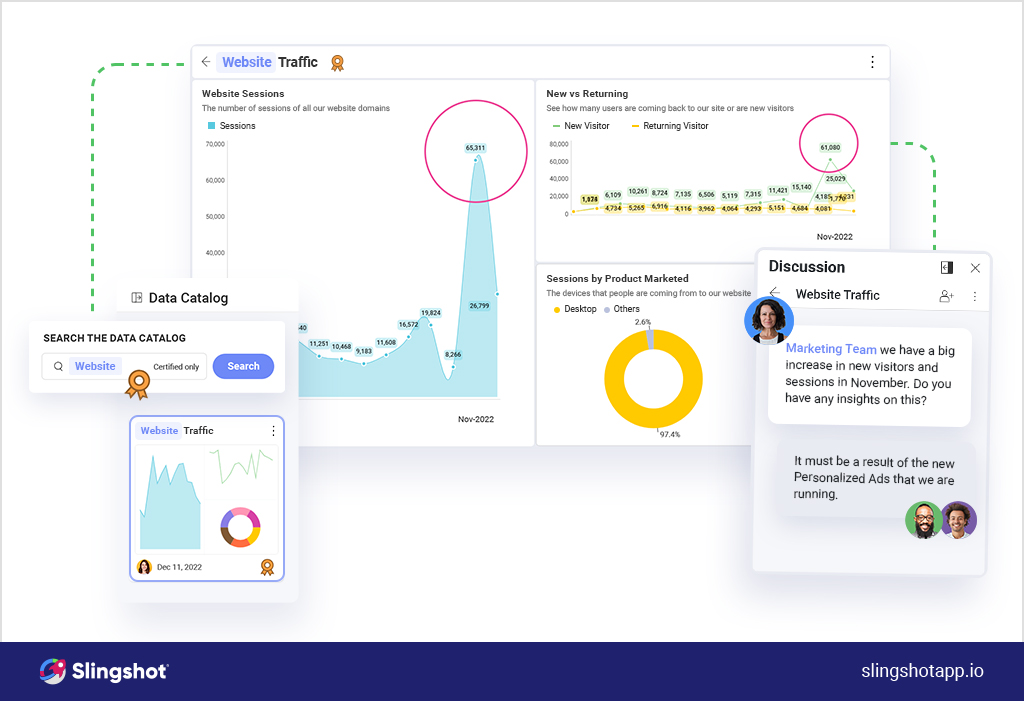
- Customization and scalability: Slingshot makes it easier to expand and manage more complex data projects as your SaaS business and its KPIs grow and evolve. Slingshot has been also designed to scale alongside your business and accommodate increasing data volumes and business users.
- Pricing: Slingshot has a subscription-based pricing model and offers Saas businesses three plans designed to suit any team regardless of size, types of projects, goals, and objectives. It offers different pricing tiers and features, allowing you to choose a plan that aligns with your budget and requirements.
Not convinced yet?
Try Slingshot for free and see for yourself how it can help you elevate your SaaS business.
Related Articles
Ready to grow your business 10x with AI decision-making?
Request a Free Demo of SlingshotSHARE THIS POST




 Return to Blog
Return to Blog